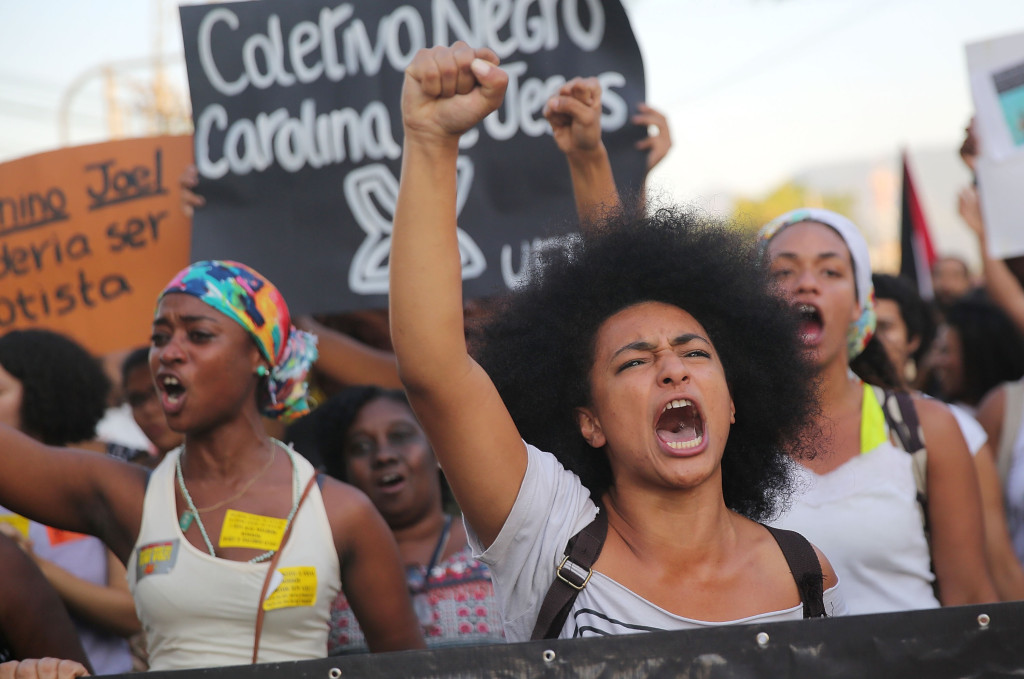
Demonstrators march through the Manguinhos favela to protest against police killings of blacks on August 22, 2014 in Rio de Janeiro, Brazil. Every year, Brazil’s police are responsible for around 2,000 deaths, one of the highest rates in the world. Many of the deaths in Rio involve blacks killed in favelas, also known as slums. (Photo by Mario Tama/Getty Images)
By Steven W. Hawkins, executive director of Amnesty International USA, and Atila Roque, executive director of Amnesty International Brazil
Here in the United States, we know the names. Michael Brown. Eric Garner. Tamir Rice. Walter Scott. Freddie Gray. Rekia Boyd. All African Americans killed by police.
But we don’t know the names of Eduardo de Jesus Ferreira — 10 years old and shot by police who mistook a phone for a gun. Or Alan de Souza Lima — who at 15 was filming his friends laughing and joking and unwittingly captured his own death seconds later in a hail of bullets. Or Claudia da Silva Ferreira, a 38-year-old mother who was wounded in a police shootout, tossed out of the unsecured back door of a police vehicle and fatally dragged 1,000 feet.
These last three cases took place in Brazil, but we ought to know their names, too. Because each name now marks an individual tragedy that we’ve become too familiar with — the killing of a human being by police, sometimes unarmed and not involved with crime. And it is more than a national problem.
A report we released last month on state laws in the United States and a new report documenting cases in Rio de Janeiro, Brazil, show practices that fly in the face of international standards guiding the use of lethal force by police.
The U.N. Basic Principles on the Use of Force and Firearms by Law Enforcement Officials state that law enforcement can’t use firearms against anyone except in self-defense or the defense of others against the imminent threat of death or serious injury. Furthermore, international law enforcement standards require that force of any kind, including deadly force, may be used only when there are no other means available that are likely to achieve the legitimate objective.
Read the full article at The Miami Herald.
Nice and best one post keep it up.
Hey,
thanks a lot for this. just bookmarked your blog.
apps like vshare alternatives
Good article
Superb informative article thanks for sharing this useful article..